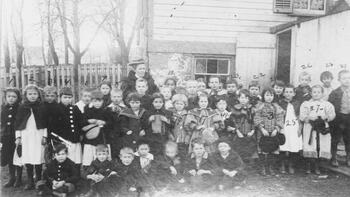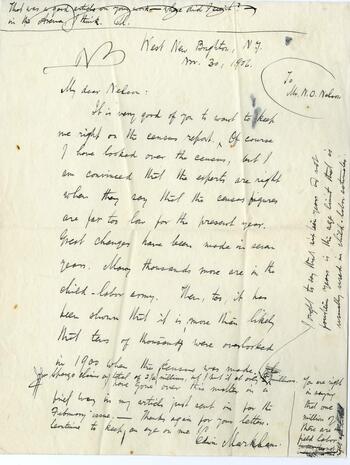Not everyone who should be counted does in fact get counted. Throughout history, many people have mistakenly assumed their young children did not need to be counted. For example, in a 1906 letter from American poet Edwin Markham to Nils Olas Nelson, both concerned with the issue of child labor, expressed concern that “..it is likely that tons of households were overlooked in 1900 when the census was made..” The persistent undercount of children can be inferred from other documentation. As an example, a circa 1885-1900 photograph of a group of 40 school children in West Nyack New York identifies specifically only two of the children as being listed in the 1892 census. Many people, fearing the “intrusiveness” of the questions, refuse to respond every time a Census is taken. But the federal government relies on Census data to guide how federal dollars are spent. Census-derived data sets are used to: define eligibility criteria for some programs; compute formulas for other program; rank projects based on population criteria (small towns, poorer neighborhoods, etc.); and are used to set interest rates for federal loan programs.
For example, Census data is used to provide federal funds for school districts. So, if young children are not counted, there is a good chance the districts they live in will not receive adequate funding. Likewise, people living in rural areas can be considered “hard to count” populations. The “Counting for Dollars Project” of the George Washington Institute of Public Policy has identified more than 320 census-guided federal spending programs, and among those, 55, or one in six, of these are targeted to rural communities, that in FY2016 amounted to $30.7 billion.
People who are not U. S. citizens are also often “undercounted” because they are reluctant to reveal themselves to an agency that could potentially report them to U.S. Immigration Services who might them have them detained and deported. Whether or not you are a US citizen, your responses to the US census remain confidential for 72 years.
West (Central) Nyack School Pupils, ca. 1895-1900. Description: A teacher stands with nearly 40 young children outside of a school building in West Nyack. Names are written for some of the pupils: Malcolm Scott, Edw Ackerman, Chas Semmens, ? Garrison, ? Jordan, Wm DeMartini, ? Jaycox, ? Burdick, Carrie Calamari, George Onderdonk, Agnes Stuart, Harry Palmatier, Russell McIntyre, Hazel Randall, Lucy Palm ..., Frank Kin... Notes: Harry and Lucy Palmatier are listed in the 1892 NYS Census, residents of Clarkstown/Central Nyack. Image provided by Nyack Library Local History Room on New York Heritage.
Markham writes to Nelson concerning the latest census figures and child labor. “That was a good article on your work – where did I see it? In the arena, I think. (Crossed out at the top of the page) West New Brighton, N.Y. Nov. 30, 1906 To Mr. N. O. Nelson My Dear Nelson: It is very good of you to want to keep me right on the census report. Of course I have looked over the census, but I am convinced that the experts are right when they say that the census figures are far too low for the present year. Great changes have been made in seven years. Many thousands more are in the child-labor army. Then, too, it has been shown that it is more than likely that tens of thousands were overlooked in 1900 when the census was made. John Spargo claims a total of 2 ¼ millions, but I find it at only two million. I have gone over this matter in a brief way in my article just sent in for the February issue. Thanks again for your letters. Continue to keep an eye on me! Edwin Markham (On side of page): I ought to say that sixteen years and not fourteen years is the age limit that is usually used in child labor estimates. (Bottom corner of page): You are right in saying that one million of these are field labor.” 1906 November 30, West New Brighton, N.Y. [to] Nelson. Image provided by Wagner College, Staten Island, NY on New York Heritage.

